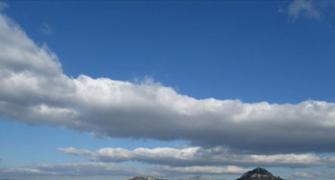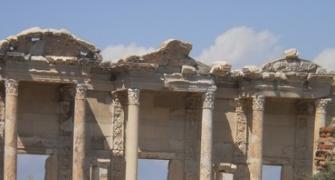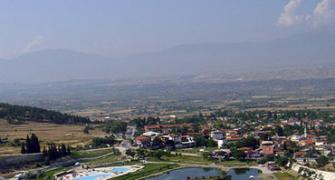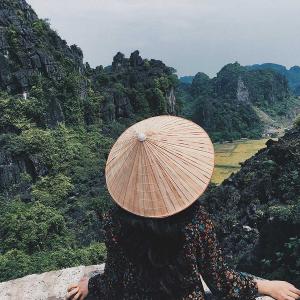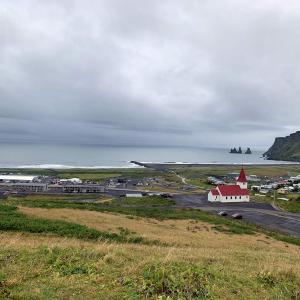The jewel-encrusted Topkapi dagger and the enormous Spoonmaker's Diamond set amongst two more rows of diamonds were truly gape-worthy!, Letika Saran tells us after a fascinating encounter with Istanbul.

It was overcast and gloomy when we touched down in Istanbul. Not really the perfect welcome one would have liked.
After taxiing for what seemed ages on the runway, we had to walk the width of Istanbul airport to get our bags and set off on the one hour ride to our hotel in the city.
The initial greenery gave way to buildings and buildings and buildings, interspaced with some amazing mosques of all sizes.
Strangely, the name of the city Istanbul, located on the Bosporus Strait, that connects the Black Sea with the Sea of Marmara, is derived from the Greek 'stin poli' meaning 'in the city' or 'to the city'!
The hotel where we were to stay for the next three days was a bit of a shock. We needed to be our skinny selves of a distant past to use the room and the bath -- both minuscule!
But that got brushed aside with the hospitality and the cosy corner shown to us to sit down with tea, wine or better! Tea and coffee were available 24/7, and the cake, savoury biscuits, dried apricots and nuts were superb.
The breakfast spread was one to drool over, with the fresh and dried fruits, nuts, a variety of cheeses and breads, aside from the usual eggs and sausages, juices, tea and coffee.
Many Indian tour agents tell their counterparts that Indians prefer Indian food, vegetarian or fish. As we insisted on only eating the local food, we were taken off to a seafood restaurant on the banks of the Bosporus, where people were busy fishing with lines suspended from the road, two storeys above.
One brave soul in our midst wondered if she could be hauled back on to the road with the line!

The sightseeing began in earnest with a drizzle. We brought three umbrellas, but left them in the bus during our visit to the Dolmabahce Palace. This palace is just outside the seven hills of Istanbul and was built in the royal gardens developed on land reclaimed from the Bosporus early in the 17th century by architect Nikogos and his father Karabet Balzaris for Sultan Abdal Mecit. It was designed to impress!
The interior of the palace was done by a French decorator Sechan. The furnishings in all the 285 rooms, including 43 large salons, was coordinated. But the real attraction was the large collection of crystal chandeliers and the crystal staircase.
The ceremonial hall had a 750-candled chandelier -- one of the largest in the world. The result: Another Versailles.
The sultan, his family and their retinue shifted to Dolmabahce from Topkapi Palace in 1856. There were rooms for the children to study in and for the masters to rest. The harem was where the girls studied. The harem in Türkiye has a slightly different meaning -- all women who worked in the palace also were a part of the harem.
The relationship of the sultan with all ladies in the harem was not necessarily sexual -- that was confined to very few. Another interesting feature was that when a lady conceived, the sultan would marry her before her confinement and divorce her soon after thus legitimising the fruit of the union!
The original historic Istanbul was also built on seven hills similar to Rome, with each symbolised by a special flower. The Dolmabahce Palace was outside the first hill but the other places we would go to over the next two days was on the first hill. As was our hotel!
This Theodosian city was divided into 14 regions that enclosed these seven hills. The topography was of great strategic importance for Constantine, the Roman emperor who made the city his capital, and he had issued an imperial decree calling his new city Nova Roma Constantinopolitana or New Rome, the City of Constantine.

The rain was now more than a drizzle and we hurried back to our bus instead of enjoying the garden and the Bosporus beyond. The gardens were truly beautiful with tulips in bloom and cats sitting pretty and posing for photographs wherever they wanted.
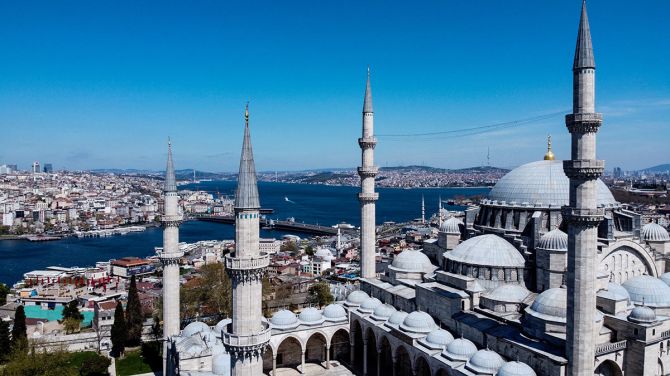
We went to the Suleymaniye Mosque, said to be one of the largest in Turkey.
Before moving right in, Julia, our guide, drew our attention to the narrow tombstones on the graves near the entrance. Each grave had a big stone at the head and a smaller one at the foot of the grave -- the stones indicated the direction in which the person was buried.

First we visited the mausoleum of the sultan and his children and that of his wife in the next building and then went into the mosque. The mosque was the centre of a complex with educational institutions, a hospital, a hammam or public bath, a street of shops, along with the mausoleums.
The mosque, which was modelled on the Hagia Sophia nearby, with several domes, was testament to the brilliance of Sinan the architect. He designed it in such a way that there was natural light from the 32 openings overhead lighting up the interior.
Despite the place also being lit up by oil lamps, the walls were not soot blackened as the soot got collected in a single room built for the purpose and was then made into incense sticks.

The last stop was the Spice Bazaar or what was earlier known as the Egyptian Market and was now known as the Misir Carsisi, near Eminonu, the commercial waterfront quarter. It was a large enclosed area full of shops selling dried fruits, nuts, spices, different types of tea, the famous baklava and Turkish Delight.
Sips of apple tea or some other fruit tea was a must followed by a taste of Turkish Delight. All of us landed up with sugar highs post sampling the varieties of the sweets and dried fruits.

Our last stop for the day was the Basilica Cistern or the Cisterna Basilica, the underground water storage system created during the Byzantine period.
To build this underground structure, a large number of temples (to Greek gods) were destroyed and the pillars brought in for the purpose. All told, 336 marble columns supported the structure lined up in 12 rows of 28 columns, each measuring 9 metres in height.
That the pillars came from different places was evident -- an early instance of recycling after destruction.

The cistern, no longer in use, contained a small amount of water and had walkways for tourists to get a feel of what it was -- an 80,000 cu m water storage system that had stood the test of time and earthquakes.
Two of the pillars had the image of Medusa on the top but when installing them in the cistern they were placed head down. According to our guide, the pillars were inverted to counter the power of the Gorgons (external link) to turn people into stone!
Tired and wet, we returned to our hotel to find a small repast in the form of dried apricots, hazelnuts, savoury biscuits and a cake apart from the tea and coffee. We took our tea and went off to "our" sitting room where a fire was blazing away.
Interestingly, one of the group was named Mustafa by Tunjay at the front desk, saying that he looked like his friend with the same name. And our Mustafa was joined by Pasha, after he bought the first of his two fezs which he wore throughout his stay!

The next morning was a continuation of the previous day.
A visit to a carpet shop seemed mandatory and we were taken off to see some beautiful pieces with the changes in colour depending on where you look at it from. One carpet -- a beautiful tree of life -- was bought as a very thoughtful housewarming gift!
From there the shopping continued to another tourist must-go -- the Kapali Carsi or Grand Bazaar. Most of the goods on display, especially locally-made fare, were quite expensive.
Outside the Grand Bazaar, we found a shop selling hats/fez among other things. While others played and posed with the cats, our group leader fittingly bought a cap that was reminiscent of the Soviet leaders of the past!

After lunch, our very own Pasha ran off to the hammam while the rest of us went off sightseeing. The rain was a steady patter, but the good folks at our hotel had asked us to make use of the umbrellas kept in the foyer, so we were protected.
We walked up to the Hagia Sophia or Aya Sofiya. Tulips of all hues were in full bloom and were a beautiful sight despite the rain!

Hagia Sophia was a church that turned into a mosque and then became a museum in the turn of the last century and was now a mosque again.

We walked into a huge space with domes amd domes. The Byzantine murals were covered by the crusaders and later kings with plaster.

The curious part was wondering why that was done. Were these paintings which showed the holy family as non-white?
A few murals were there to see, like the cherub within the great hall and the Virgin Mary with two latter-day emperors on the passageway out.

From the Hagia Sophia, it was a short walk to the Topkapi Palace, one of the world's largest surviving palaces and was built between 1460 and 1478 under the orders of Sultan Mehmed II, a few years after he conquered Constantinople, the capital of the Byzantine Empire or the eastern Roman Empire; Constantinople is the earlier name of Istanbul.
The palace served as the home of the Ottoman sultans for almost four centuries after that. It was also the state's administrative and educational headquarters. We went to the kitchen end (which one of the group said she saw from her window in the hotel) and to the main museum avoiding the rest of the extensive palace.

In the kitchen section, the coffee-making museum and another of all the crockery and utensils once used made interesting viewing.
The main museum had a number of weapons. Swords and maces made for giants and which were given as gifts and that could never be used by mere man!


The main attraction for all were two objects -- the Topkapi dagger and the Spoonmaker's Diamond. The jewel-encrusted dagger and the enormous diamond set amongst two more rows of diamonds were truly gape-worthy!
We walked back to our hotel, which literally was a hop, skip and jump away, through the Hippodrome, partly because of the road repair work going on.
The Hippodrome was a watered-down version of what it once was -- a large rectangle with three monuments erected along its spina, or central axis: The Egyptian Obelisk, the Serpent Column, and the stone obelisk known as the Colossus.
Pasha meanwhile had returned rosy-hued from his Turkish bath. His description of the 'scrubbing' to remove the dead cells and the massage by the muscular attendants scared the others away from trying out the hammam experience!
An evening in front of the blazing fire was most welcome from which no one wanted to move.

The next day was bright and sunny and all of us took off to wander about on our own.
The most erudite in our midst went off to see Orhan Pahmuk's Museum of Innocence, which was described as a great experience if you have read the book of the same name.
As for the rest, we walked around, sat with the cats in a park and watched people come to feed them. Little cat houses were placed on small parapets around the park.
We found a nice food court, but our ordering of food went a little awry, with the wrong group getting the mezze platter. The Adana kebabs helped in soothing rumbling tummies.
Pasha ran off for his second hammam session at a place closer to the hotel and came back suitably flushed from the scrub.

The Bosporus cruise in the evening turned out to be quite disappointing as it sought to showcase Turkish culture with the folk dances and music, with the mandatory whirling dervish and the belly dancer.
We perhaps were in the wrong place at the wrong time. One silver lining was seeing the Dolmabahce Palace all lit up and looking beautiful.
- Part 2: Turkey: Between Two Worlds
Letika Saran, retired director general of police, Tamil Nadu, enjoys visiting new places with family and friends.
Feature Presentation: Ashish Narsale/Rediff.com

